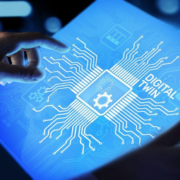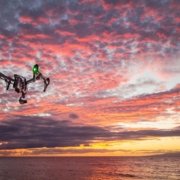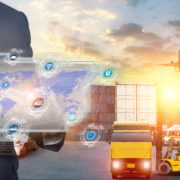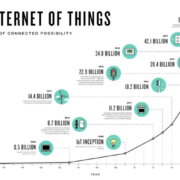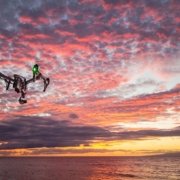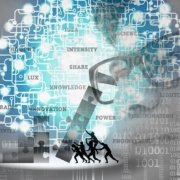Blue Innovation – Digital Twins
How can ports innovate with the Internet of Things?
In recent years, the shipping industry has been playing catch-up with many innovative trends that other industries have embraced. One of those trends has been the concept of digital twins – the idea to use the Internet of Things and Big Data to create a virtual entity that essentially operates in the same was as the physical one. So what are digital twins, and how can they be applied in the Blue Economy?
A digital twin is “a digital replica of a living or non-living physical entity. By combining the physical and the virtual world, data is provided enabling the virtual entity to exist at the same time with the physical entity”. Within the digital system, replicas of physical characteristics can be used and tested, both to streamline efficiency and to troubleshoot potential problems. If set up and programmed correctly, digital twins can even ensure that physical tests are not necessary to implement any changes. Today there are estimates that predict that in the next decade, these innovations will account for 10% of improvements and effectiveness of more than half of companies across all industries.
How does it work?
The technologies used to create the virtual representations of real objects are unquestioningly complex. Put simply, the twins use “digital tools and real-time data to virtually create, test, build and monitor a product or process – closing the feedback loop between design and operations.” As previously stated, the goal of these is to improve and test new designs and processes without disturbing ongoing operations – a factor that could be critical when it comes to transport operations in a globalised port. Imagine testing out new, more sustainable bunkering operations in a port at absolutely no risk or delay in transit time for the vessels – any port authority’s dream! The systems can achieve this by using artificial intelligence algorithms to analyse the data put in, and thus come up with accurate predictions for operations, designs, processes, etc. For example, using this approach within a port it would be possible to accurately “predict what the best time is to moor and depart”, therewith significantly reducing wait times and financial losses. An article by Port Technology on the subject exemplified this very accurately: “With a digital twin of the port, it’s possible to calculate exactly how much cargo needs to be unloaded there. This allows the vessel to sail sooner and with more cargo to its final destination”.
The technologies have already been applied to all industries – from Formula 1 races to Space exploration missions to actual humans. Perhaps the most impressive of all digital twins is the one that exists of an actual city – namely of Singapore. In 2018, Dassault Systèmes completed the virtual simulation, called 3DEXPERIENCit, which helps city planners analyse and improve energy consumption of its citizens, alongside other aspects of their everyday lives. Talk about Smart Cities!
What about Smart Ports?
Within the Blue Economy, digital twins have already begun to emerge. Virtual copies of vessels, simulations of transport operations, among other things have already helped improve operations. Ports are not lagging far behind in this revolution either – the Port of Rotterdam, Europe’s largest port, has enthusiastically invested in the endeavour, which is being developed with the help of the Rotterdam Port Authority, Axians, Cisco, IBM® and many others.
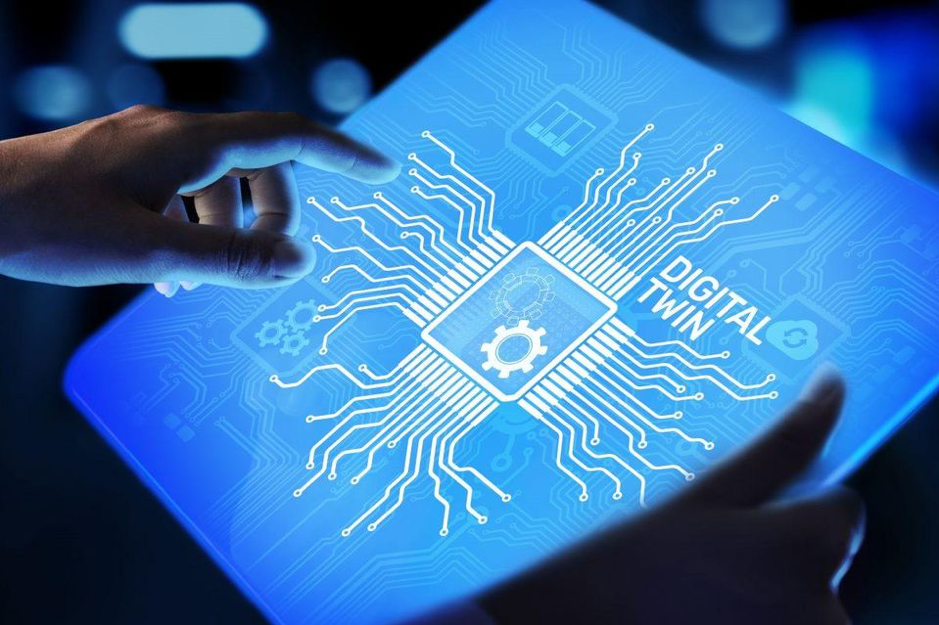
The project, aptly named Port Vision 2030, “establishes where action is needed to ensure that companies can operate optimally within the Global Hub and within Europe’s Industrial Cluster.” Using IBM Internet of Things technology, the Port strives to become the first fully digital port by 2030, and simultaneously the model Smart Port for others to follow.
During this year’s Smart Cities World Expo Congress, which will take place in Barcelona between the 19th and the 21st of November 2019, innovative new technologies will be showcased and presented to all attendees. The event will also play host to a SmartPorts Summit, which will bring together the world’s top 10 smart ports, and give them the opportunity to showcase their most innovative projects in sustainability, digitisation, innovation and mobility. There is still time to register – check out the passes and join the Escola’s team on the Expo floor.
Written by:
- Lidia Slawinska, Consultant – Escola Europea – Intermodal Transport
Sources:
- https://www.ns-businesshub.com/technology/digital-twin-examples-formula1-singapore/
- https://www.forbes.com/sites/bernardmarr/2019/04/23/7-amazing-examples-of-digital-twin-technology-in-practice/#332afba76443
- https://www.porttechnology.org/news/how_digital_twins_are_evolving_ports/
- http://www.smartcityexpo.com/en/

